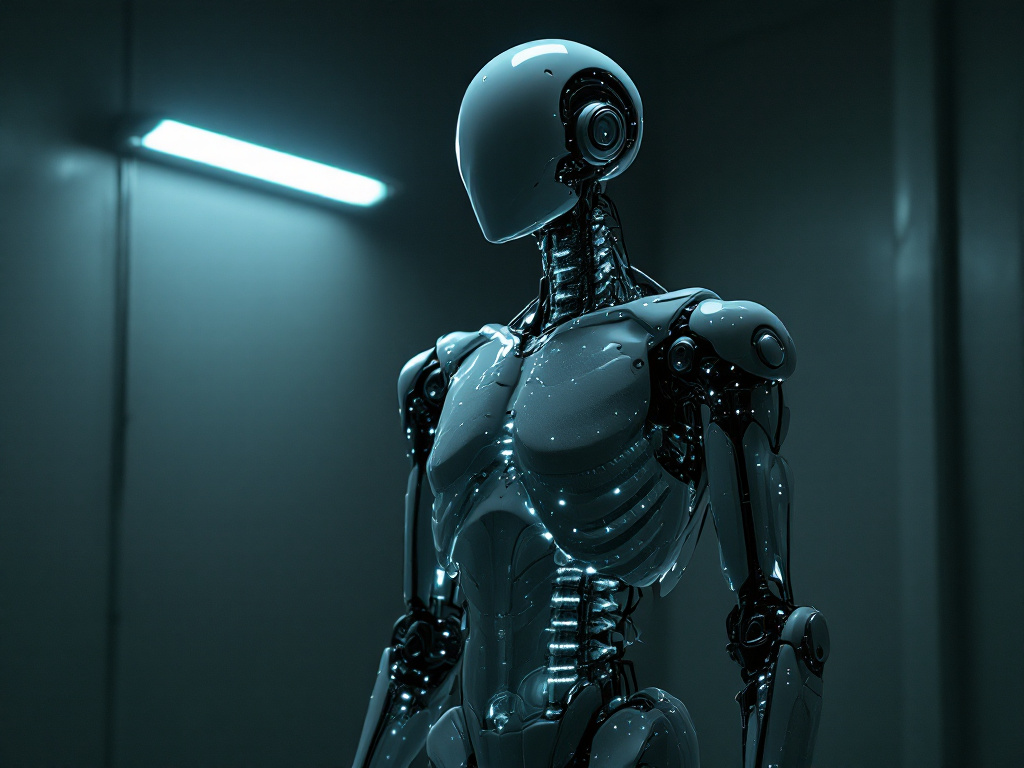In a previous article, I introduced the Protoclone. Now, let's explore the latest updates on this cutting-edge technology.
For years, science fiction has warned us about the rise of machines—androids so lifelike they could blur the line between human and artificial. Now, that future is no longer confined to fiction. The Protoclone, a musculoskeletal android developed by Clone Robotics, represents a chilling glimpse into a world where humanoid robots walk among us. Is this the dawn of a technological utopia, or are we on the verge of a Westworld-style nightmare?

inside a protoclone
What is the Protoclone?
The Protoclone is a bipedal android with an advanced musculoskeletal system, eerily mimicking human anatomy. With over 200 degrees of freedom, more than 1,000 artificial muscle fibers, and over 200 sensors, it moves with an unsettlingly organic fluidity. Its 206 polymer bones are connected by synthetic connective tissues, making it one of the most human-like robots ever developed.
The Myofiber Muscle System: Strength Beyond Flesh
One of the most groundbreaking (and perhaps most unnerving) features of the Protoclone is its Myofiber muscle system, developed by Clone Robotics in 2021. These artificial muscles mirror the contraction and response speed of human muscle fibers, allowing for swift, powerful, and eerily natural movement—perhaps too natural for comfort. Unlike traditional electric motor or hydraulic systems, these fibers give the Protoclone an almost organic grace, making it indistinguishable from a human silhouette in dim lighting.
A Robot with Unsettlingly Realistic Capabilities
Recently, Clone Robotics released a demonstration video showcasing the Protoclone's movements. While undeniably impressive, the footage also raises profound questions. The faceless android moves with an eerie realism, its inhuman blankness only adding to its unsettling nature. The sight of a machine that moves like us—but lacks any defining human features—feels like something ripped straight from a dystopian thriller.
Watch the Protoclone in Action:
The Future of the Protoclone: Helper or Harbinger?
Clone Robotics plans to open pre-orders for the Protoclone by the end of the year, with a limited production run of 279 units in its Alpha edition. The stated goal? To create an android capable of household tasks and seamless human interaction. But is this truly a step toward progress, or are we engineering the very thing we’ve feared for decades?
Clone Robotics and the Competitive Market
With the Protoclone, Clone Robotics steps into an arena already occupied by tech giants like Tesla (with its Optimus robot), Boston Dynamics, and Meta. As these corporations race to build the most lifelike androids, the question arises: where do we draw the line? The implications are massive, not just in terms of industry but in ethics, security, and the future of human-robot interaction.
A Step Toward Science Fiction—or a Warning?
We are closer than ever to a world where humanoid androids roam freely, performing everyday tasks and blending into society. But should we be excited or terrified? If Clone Robotics perfects the Protoclone, what comes next? A workforce of artificial humans? Machines that replace us? Or something far more sinister lurking beneath the polished surface of innovation?
What do you think—are we witnessing a technological miracle or the early days of an AI-driven dystopia? Share your thoughts in the comments!
Sources
Clone Robotics Official Website: https://clonerobotics.com/android
The New York Post: https://nypost.com/2025/02/21/tech/humanoid-robot-springs-to-life-in-dystopian-viral-video-straight-out-of-science-fiction/








Leave a Comment